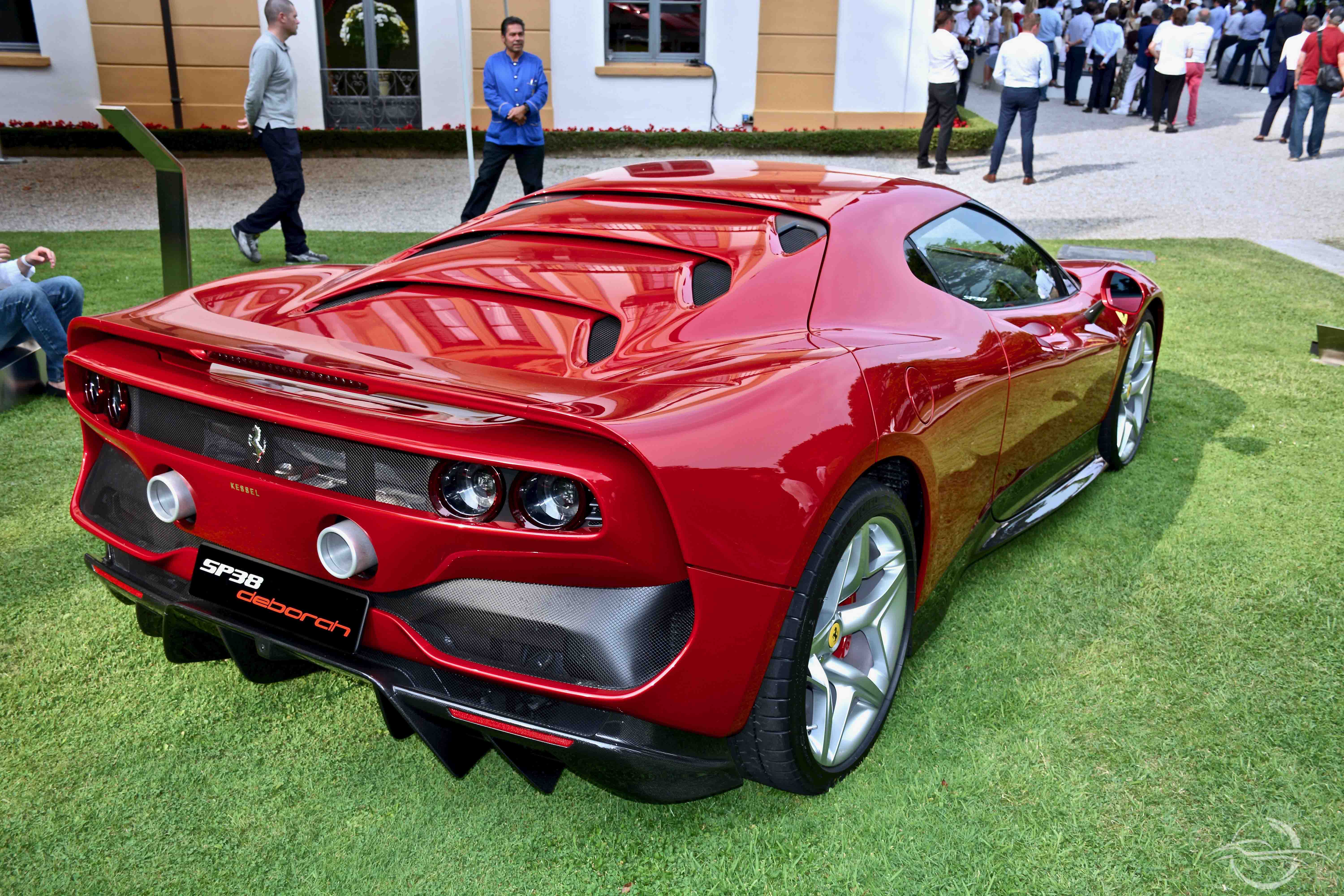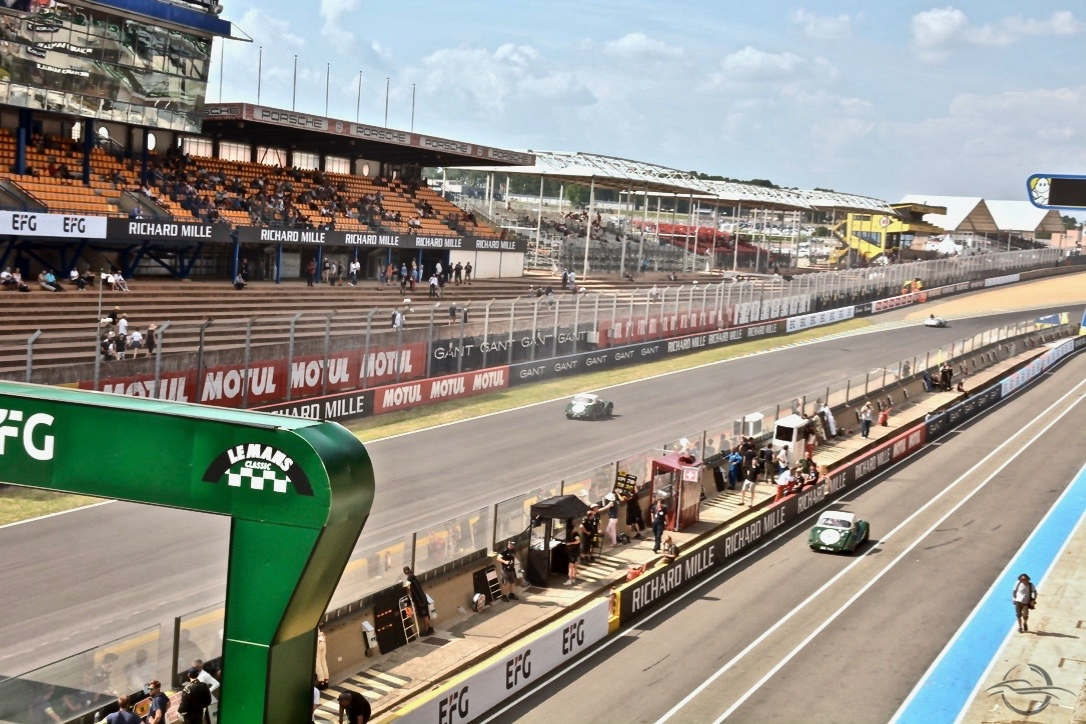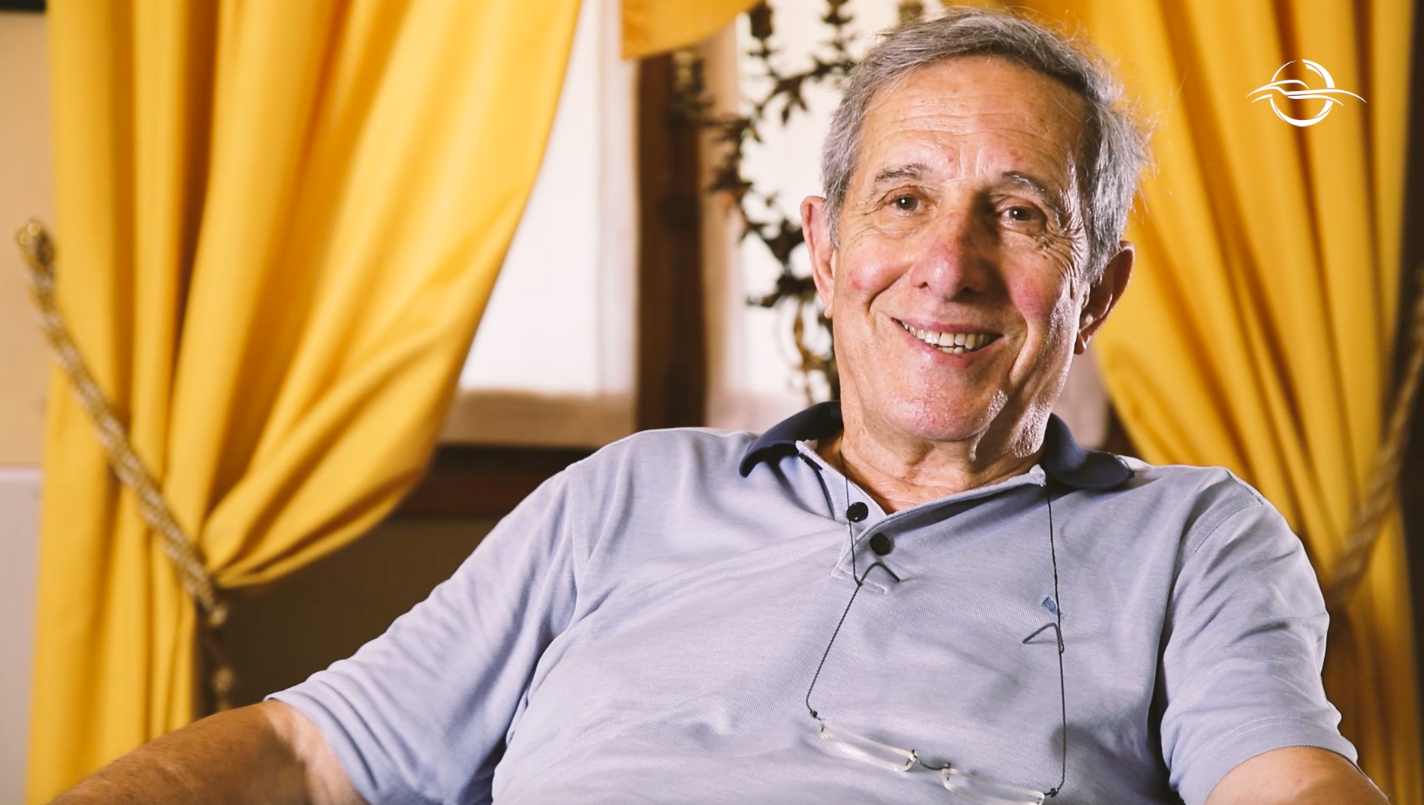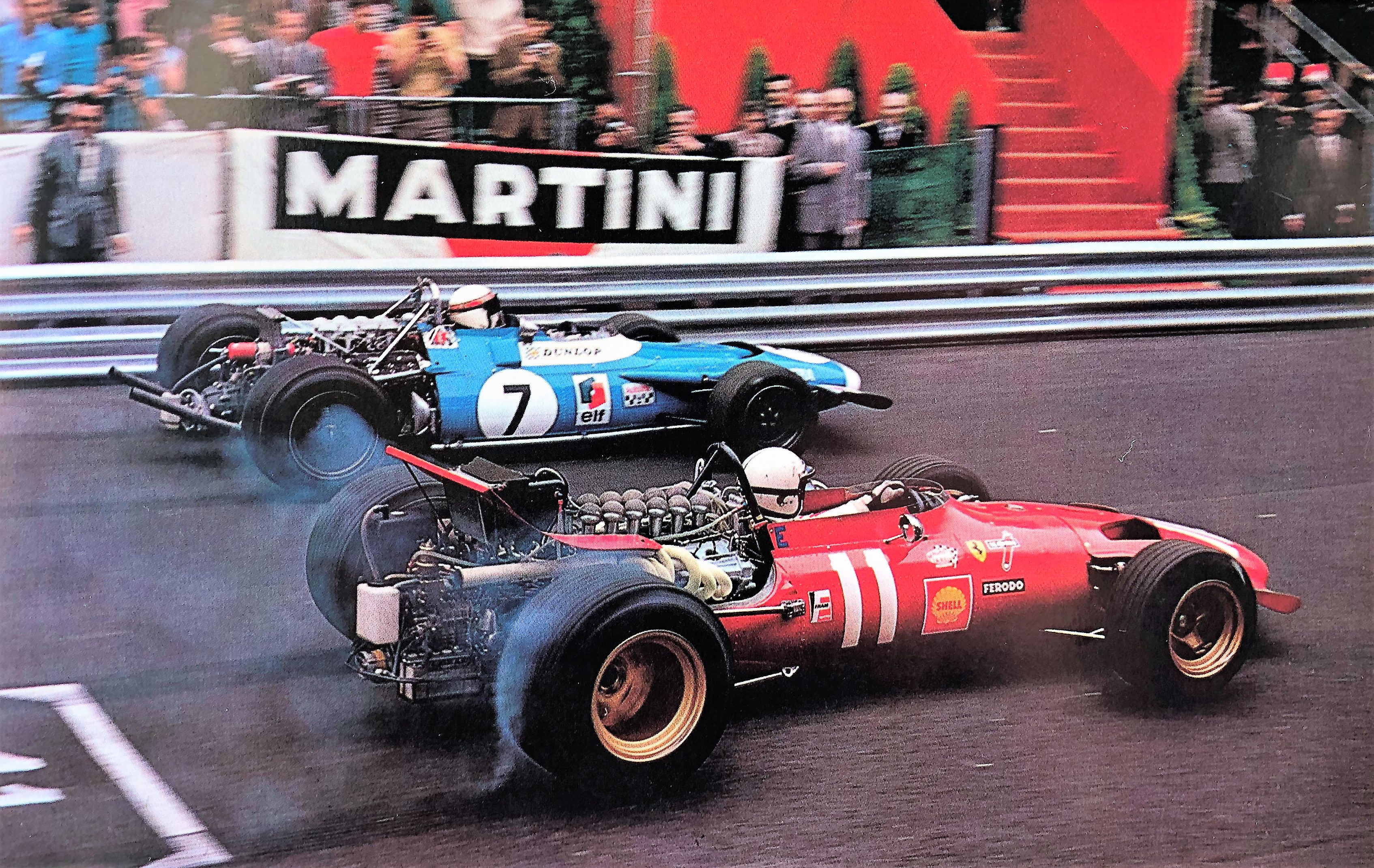– Today, there is a going back to the ‘one-off’…
– Yes, today We’ve gone back to personalisation. The real historical cars, that is, real classic cars, will always be more valuable because they’re available in limited numbers. In our environment, I saw this happening at the end of my relations with the company. When I stopped working due to my heart surgery, everybody knew that we didn’t make more than one hundred to two hundred cars per year. People did crazy things to get their hands on them, you should have seen how they were all running to the car dealerships to book them. When we said that we would make 25 Le Mans F40 cars only for racing, all of the Ferrari Clubs wanted one. Those were the company scoops and they worked fantastically well, that is, with the financial surplus made from limited series, we could afford to keep a research centre, an experience department. Do you know what that means? It means that you have the opportunity to implement innovation, to focus on technology because even if you focus on the pure and simple manufacturing process, the moment to sell the car at market prices always comes. Therefore, you need to sell it cheaply. The truth is that during those years, there was a very quick evolution, within a very short time period. From 1965 to 1975 everything was revolutionised. For example, when they invented hydraulics, they introduced callipers, which enabled us to have a braking system on four wheels. Some cars drove around with a red triangle on the back of the car, to say: “stay away from me, as I’m dangerous, since I brake with four wheels, you brake with two and you will drive rear-end me!” The stimulus which triggered the search for innovation throughout the whole car industry were the races….
- Ferrari SP38 Deborah, one-off, Concorso d’Eleganza Villa d’Este 2018
– Actually, let’s talk about races! You were a metal beater in the past, when did you start following races?
– There was no censorship, the two things went hand in hand. I liked following races. We always helped each other! We spent ages there, because we prepared all the parts in two pieces and we sent the spare parts, which were all interchangeable, so that the mechanics were able to replace the body parts, even without our intervention.
– In which year did you start following races?
– In 1965, I only followed European races though: such as Le Mans, Mont Ventoux, Montlhéry, Hockenheim etc. Then I followed the whole epopee of sports cars, prototypes etc. up until 1972. I went as a bodywork mechanic, as a support in the pits, to disassemble the noses, the bonnets, mudguards, to fix the car… I lent assistance to clients and Ferrari as a bodywork mechanic. At Le Mans, I changed a windscreen of a P3 in 3 minutes. To get in the spider cars, the drivers used to put their hands on the windscreen and on the headrest and they lowered themselves down in it. It was the start, there was a lot of tension and every time they broke the glass/plexiglass. During the first pit stop, I had to replace the glass, six screws, 2 sticky tapes and go. We invented the mobile frame with the glass attached to it.
- Le Mans circuit
– You have taken many trips in the past! It mustn’t have been easy: certainly, there wasn’t the same organisation that there is today.
– Yes! Today there are planes, in the past, there were seven of us on the lorry: four sat behind, on the bench and we loaded three cars. We used the car transporter for a dual purpose too: as a mean of transport and as a lifting bridge. The driver changed the tyres at the pits, I, bodywork mechanic, helped making the brass bearings. In the hotel, we used to get 4 beds for 7 people. We optimised: two of us slept in the same bed as the bodywork mechanic worked at night when the mechanic slept, and vice versa. We took it in turns.
– And what did you do for your meals?
– Look, to begin with, we had enough of two rolls with mortadella, then, luckily, “Pasticcino” (literally, “Pastry”) arrived who, other than being a lorry driver, also cooked. So we had hot meals… it also depends on where we were. For example, in England, we ate very badly.
– I guess that given the setting and pressure, during those trips familiarity was very important to you.
– Yes, they used to call me genius and unscrupulousness, Fury and “al mat Oscar” (the crazy Oscar). In certain cases, we also made decisions and improvised in such a way to cause a lot of uproars. They were many small things, improvisations on the racing fields. We needed the conventional Eureka in those situations… and there! The illumination of the moment. Sometimes, it was even only about giving four hammers to an air inlet or to snip out a hole to make it larger: banal things, but which, in the end, brought around good results. One year, in Le Mans, I sent Forghieri to a hardware store to buy some shoe polish, which we needed to detach pieces, then, I sent a mechanic to a boatyard to get a tank of fibreglass resin and a bundle of glass off-cuts. I created the fibreglass part based on the original Ferrari part and I mounted it on the car which had had an accident, during the night between Saturday and Sunday. I cut out the imperfections with the scissors and, with a broom soaked in red paint, Mauro Forghieri and I, gave it a touch of red: it was all improvised, but it worked and the car restarted. It raced straight and steady for five hours, before it became damaged and, in the end, my part wasn’t the one to fail: the car ceased. That was actually an event which made me gain points in the pits too because that is when they noticed how hard I worked. I looked like a fleeced bird, with the fibreglass everywhere.
- Engineer Mauro Forghieri
– You will have had a lot of experiences… You could write a book for each anecdote!
– Yes. Look, sometimes they’re minor things too, which you don’t forget. For example, my mother used to make my bags every time. Once, she made a mistake and she inverted the suitcases: she gave me the wrong one. To make it brief: I found myself in England teeth chattering due to the cold, to the extent that I had to go and buy myself a jacket. Whereas in Montecarlo, where it was hot, I opened the suitcase and I found a quilted jacket in it! Poor mum, she made the suitcases in series and she made a mistake.
– I read something about your honeymoon in Monaco, during the Grand Prix.
– I met my wife when I was 10 or 11 years. We went to the same primary school and on holiday to Sestola. I started seeing Franchina when I was in the fifth year of primary school, and she was in the third year: we saw each other in the courtyard when we played. In 1969 we got married. I had dinner with all of my friends on the previous evening. My father in law told me: “You may invite who you wish!” and we took his words for gospel… we invited something like three hundred people and nobody shouted “hurray for the newlyweds”, because we weren’t actually married yet. At six in the morning, there was hardly anybody left of those three hundred people. There was the priest with two eyes like this, Franca, myself, the witnesses and a few close friends and relatives. At 7:00 AM I was in the car, I had a 124 Spider Pininfarina, and we left for Geneva! Then, we stopped off in Hockenheim for the F2 Grand Prix. Then to Paris. I looked at the calendar and I said “We’re here for three days, we can see the 1000 Km of Montlhéry”, and she answered “No, come on, let’s see the Marne and Loire castles”, okay! I drove straight to Montecarlo, where – by fortuity – the Grand Prix was being held. I went straight to the pits and they called me in because there was a nose which didn’t click in. “Franca, wait a minute, I’ll be right back”, I told my wife… then, by the time I picked up the tools, dismantled the part, fixed it. In the end, a Ferrari collaborator, left me his room booked at the Hermitage. I caught two birds with a stone! I saw the Grand Prix from the pits and I made Franca happy.
- The start of the 1969 MOnaco GP, Stewart’ Matra and Amon’s Ferrari, picture from the volume “Photo Formula1”
– So, even on your honeymoon, you couldn’t sit on your hands!
– I had lots of adventures! Once, in Monaco, Franca and I ended up in jail. On the previous day I met an American acquaintance, he had a prestigious Ferrari dealership, he told me: “Come on Oscar, please lend me the pass as I need to get in to make agreements for some spare parts.” I gave it to him, and he punctually gave it back to me in the evening, in the hotel. On the following morning, I went to the pits with Franca, when I showed the pass, the man stopped me “Le laissez-passer n’est pas bon”, he said. I looked at him wide-eyed. How? The Ferrari team gave me the pass! The man objected that the pass wasn’t original and sent us both to jail.
– How come?
– Well, I’ll tell you why in a minute. The American gave the original passes to someone else who printed off duplicates, which hadn’t been sealed off properly and sold them. They gave me the fakes back by mistake. It all worked out in the end, even if they hit someone hard with the club in the cell next to mine! Luckily, some Ferrari collaborators intervened, so we got out in the end… just on time to see my brother and sister in law get in.
– Oh no! For the same reason?
– Yes, same story. However, they were freed half an hour later too.
By International Classic, written by Martina Fragale
Keep following the story Scaglietti: “I want to make a car” – Chapter 5
Read also:
Scaglietti: “I want to make a car” – Chapter 1
Scaglietti: “I want to make a car” – Chapter 2
Scaglietti: “I want to make a car” – Chapter 3





